On Margate Sands: T.S. Eliot, Margate, and me
“On Margate Sands.
I can connect
Nothing with nothing.”
T.S. Eliot, The Waste Land
Margate Sands from the Nayland Rock Shelter
In 2009 there was an article in The Guardian about T.S. Eliot’s connection to Margate. I remember reading it at the time. I was an unemployed poet having just graduated into a huge economic crisis. I couldn’t get a job and university had not prepared me for one, studying English, Philosophy, and focussing on writing Poetry for my Masters had convinced me that getting a job would hinder more than help my career as a poet. To fill my days, I used to pop down to my village shop each day and buy a copy of the newspaper and read it all afternoon, cutting out pictures and articles I liked, sometimes they had poems. I remember reading this article about Margate, having never been there before. The article described the efforts to get the Nayland Rock Shelter listed building status as this is the shelter on the seafront where T.S. Eliot sat and wrote parts of The Wasteland during his time staying there in 1921. The article has more than a little bit of a patronising tone:
“the council has taken the unusual step of invoking the word "wasteland" as part of a tourist drive for the resort. The authority wants to remind the rest of Britain that Margate, now home to a major new art gallery, has wider cultural associations.”
https://www.theguardian.com/books/2009/jul/12/ts-eliot-margate-shrine
I remember picking up on that snobbishness when I read it back in 2009. Maybe that’s why I remembered it, the idea that some clueless local council would want to push the idea of The Wasteland as a way of promoting their town. A wasteland is not generally seen as a hot holiday destination and the poem does not have a particularly rosy and optimistic atmosphere. Neither did Margate back in 2009. As the article mentions, the Turner Contemporary gallery had recently opened, a landmark change in the history and fortunes of the town. Still controversial to this day, it has undeniably changed the town from a tired and fast emptying seaside resort, to an edgy and ‘up and coming’ seaside resort.
I’ve seen locals boast on Facebook that “they’ve NEVER been in to the Turner and NEVER WILL” objections run from it either ruining the skyline of the harbour front, ruining the rundown hotel that was there previously, ruining the entire town in general or that they are annoyed with the art on display as they were expecting to see some Turner Paintings. That final objection is a common one for daytrippers as well as locals. Spare your thoughts and prayers for the wonderful staff of the Turner Contemporary who we have overheard explaining to visitors on several occasions that there are no Turner paintings on permanent display there. Then watch as the dejected daytrippers waltz off in a huff considering the 90mins train from London down here a total waste of their time.
It’s safe to say that the T.S. Eliot connection, though strong, was not the famous connection that helped bring about the regeneration of the town.
That being said, I want to talk a bit about the poetry connections with Margate that are here and how it encouraged my love of Margate and eventually to pack it all in in London and move out here.
“Shall I part my hair behind? Do I dare to eat a peach?
I shall wear white flannel trousers, and walk upon the beach.
I have heard the mermaids singing, each to each.
I do not think that they will sing to me.”
The Love Song of J. Alfred Prufrock, T.S. Eliot
I’ve loved T.S. Eliot for years. Analysing The Love Song for J Alfred Prufrock in my A Level English class was a real watershed moment for me, I already knew I loved poetry from childhood, but really delving deep into that poem and hearing our brilliant English teacher Mrs Lancaster read it aloud, made a deep impression on me. It felt new, the voice was direct, witty and odd. I sought out a secondhand copy of the Faber collected works of Eliot from a charity shop and then read cover to cover, over and over. This was what I loved reading and what I wanted to write. The seeds of my connection with Eliot and then with Margate had been sown.
When you disembark from the 90min train from London St Pancras at Margate Station, one of the most urgent places you may wish to visit first off is the T.S. Eliot Toilets. In the station building, a bit further down from the main ticket hall, following the toilet signs, you go into a lovely wooden floored waiting room with a tiled mural on one of the walls with the quote from the great man “my name is only an anagram of toilets” and then T.S. ELIOT and the word TOILETS underneath with a helpful colourcoded lines connecting each corresponding letter, there’s a little portrait of him within the O of Eliot and the famous Margate sands quote within the O of Toilets. The mural was designed by local Filmmaker Arnold Schwartzman OBE. En route to the loo or more often afterwards, I have snapped selfies with the artwork in the background (as is evidenced above). It’s a perfect little tongue in cheek monument not just to Eliot’s connection to the town, but as a way of demarcating the space as a train station toilet. I’m sure many visitors barely notice this, but you can only imagine the shock and joy I felt when I saw this for the first time, after just arriving on our first little holiday to Margate. It was one of those little signs that I knew this place suited me down to the ground.
As you leave the train station and walk towards the sea, the T.S. Eliot/TOILETS connection continues as you find Nayland Rock Shelter, as mentioned in the article from 2009. It is technically now a protected monument. It has been fenced off for a while now. It is battered, it’s wood is rotting and it is generally looking pretty forlorn. It served as an inspiration point for poetry that explores the disconnection and sense of loss of reality by those in the interwar years. Now in 2024 it serves as a monument to the local council’s lack of funds to sensitively and respectfully protect its own precious heritage.
You can imagine, however, how back in the 1920s folk would sit here and gaze out to sea. This is a prime spot right by the Margate Sands of the poem, the wide sweeping bay which accommodates the thousands of day trippers over the summer. Next to Nayland Rock, there is a toilet block, recently painted a bright white (my council tax being well spent!) On the side of the block a lovely blue plaque memorialising Eliot writing part of The Wasteland at the shelter here. A running joke with my husband was borne out of the fact that we overheard the following conversation:
Person 1: There’s a blue plaque on these toilets for T.S. Eliot
Person 2: Ah he must have been born here then
Imagine how much the local council would celebrate the connection if indeed one of the great poets of the 20th century was born in a toilet on the seafront at Margate. Sadly he was actually born in America…
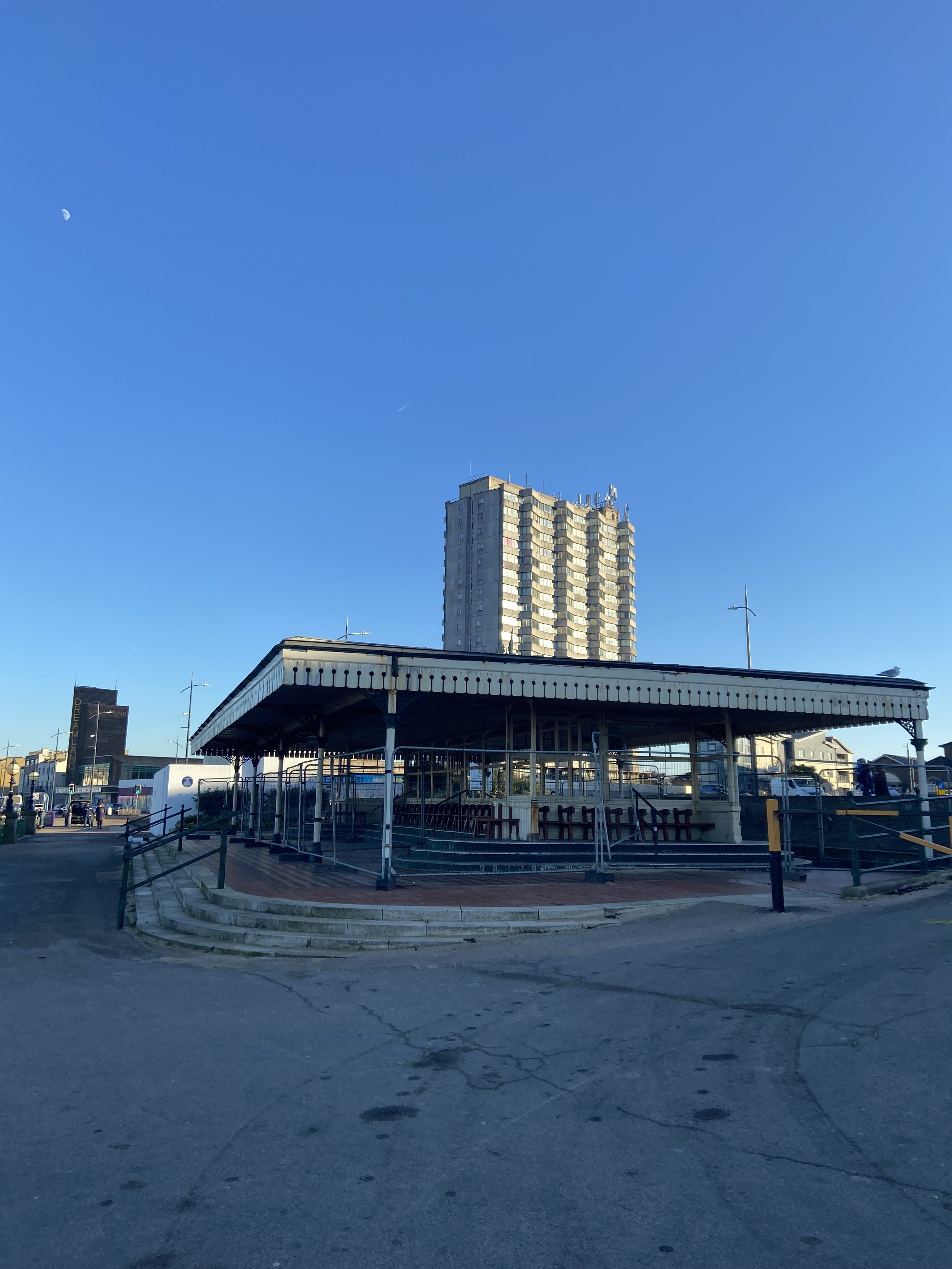
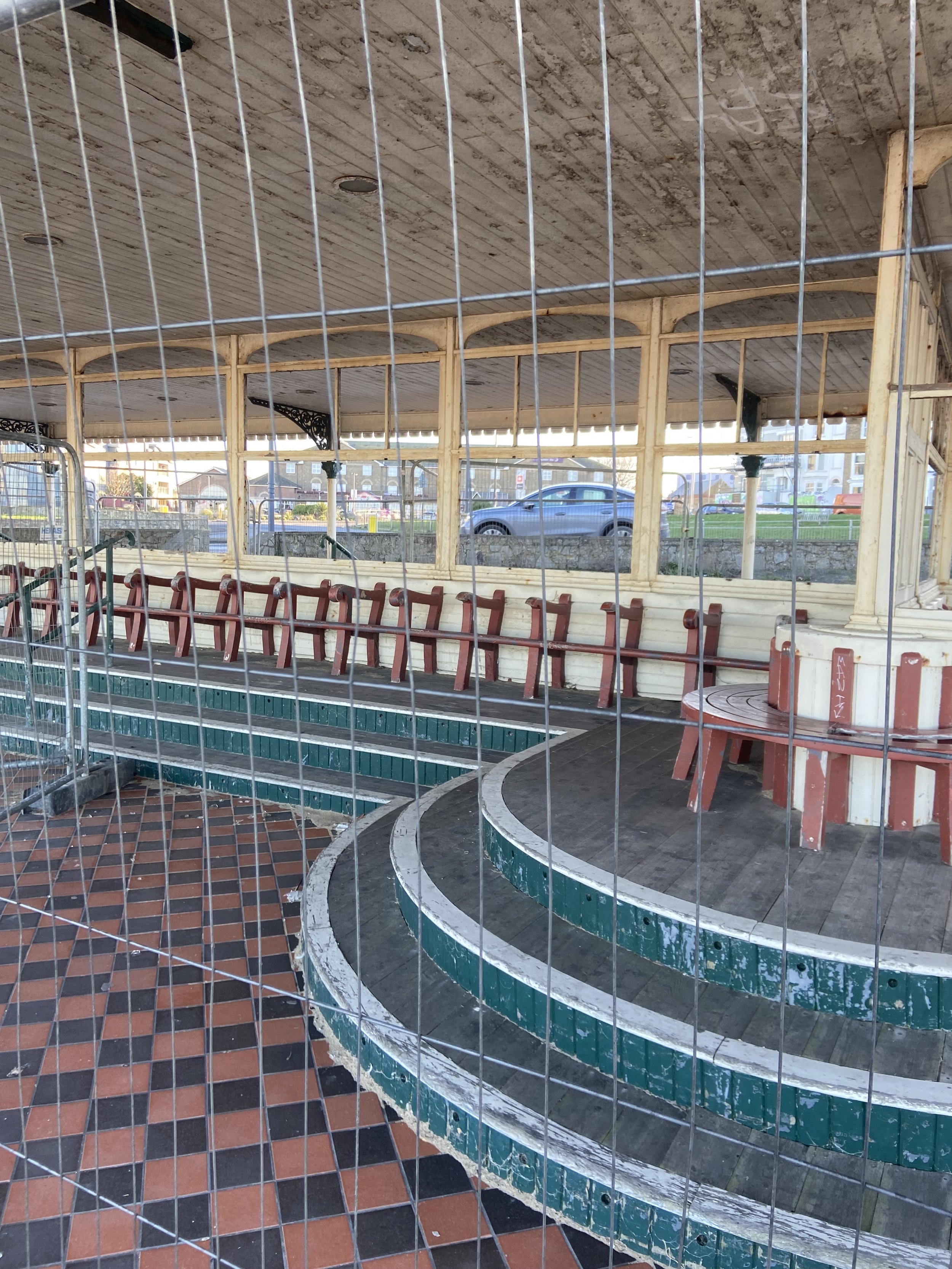
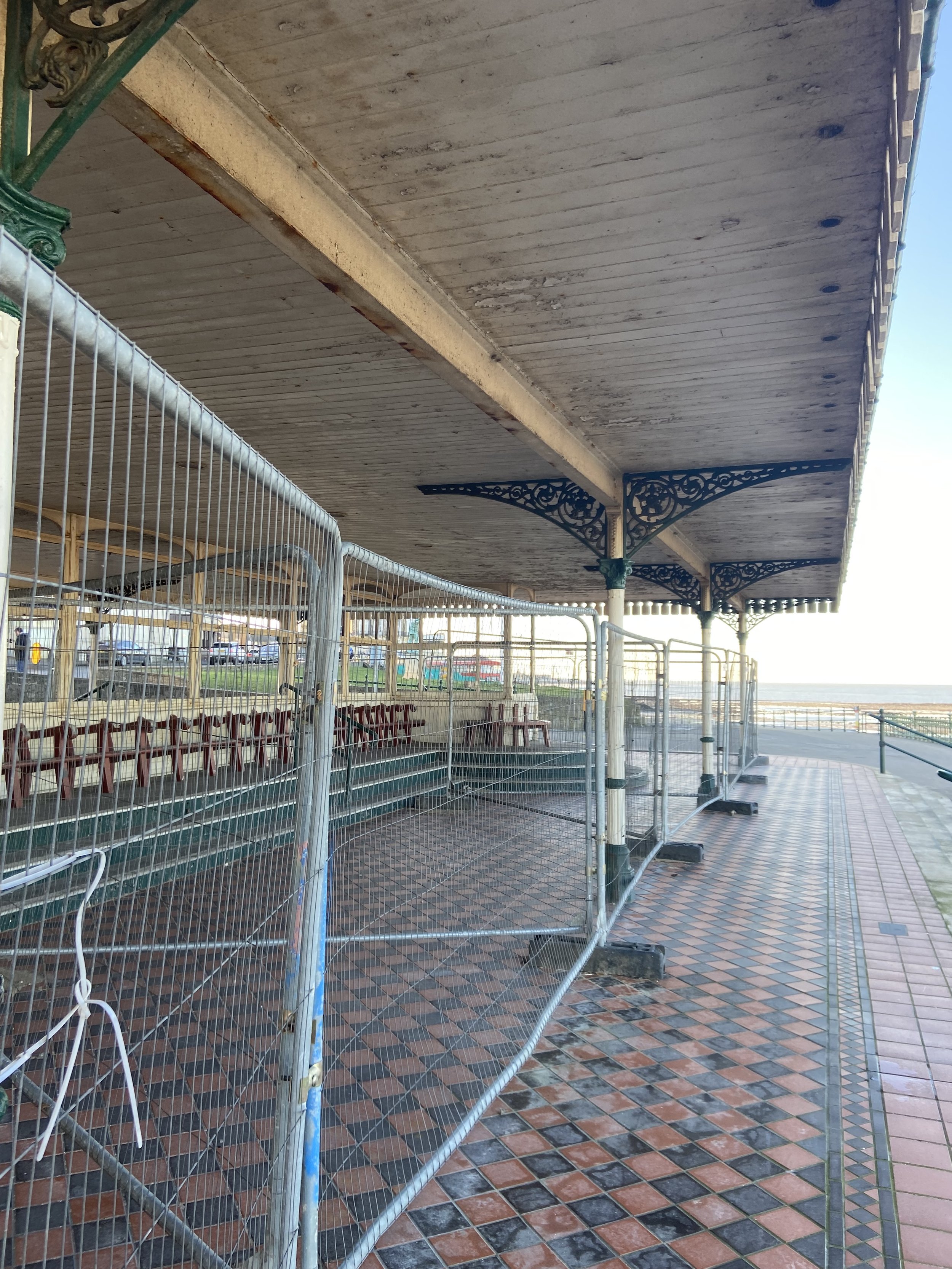
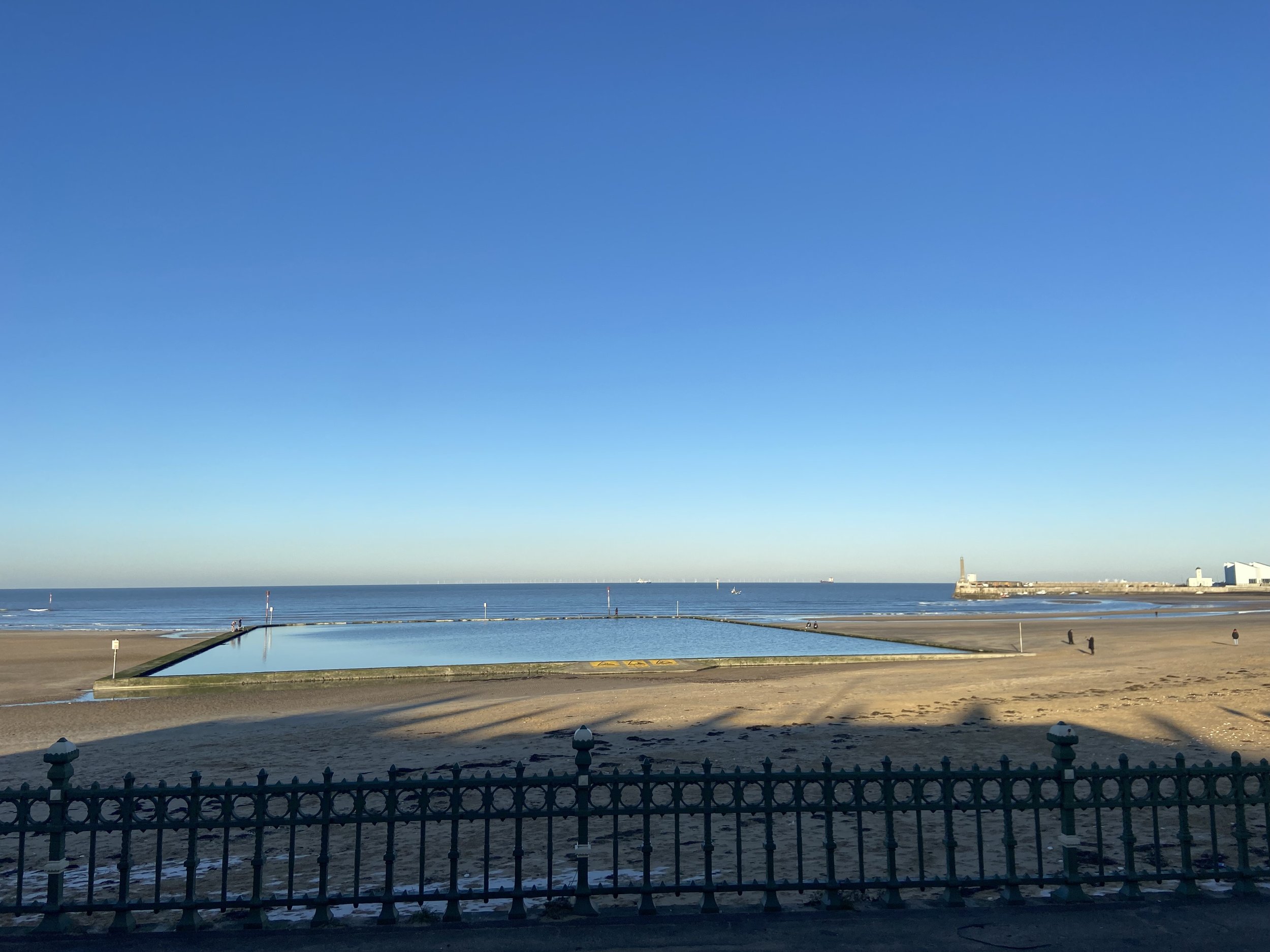


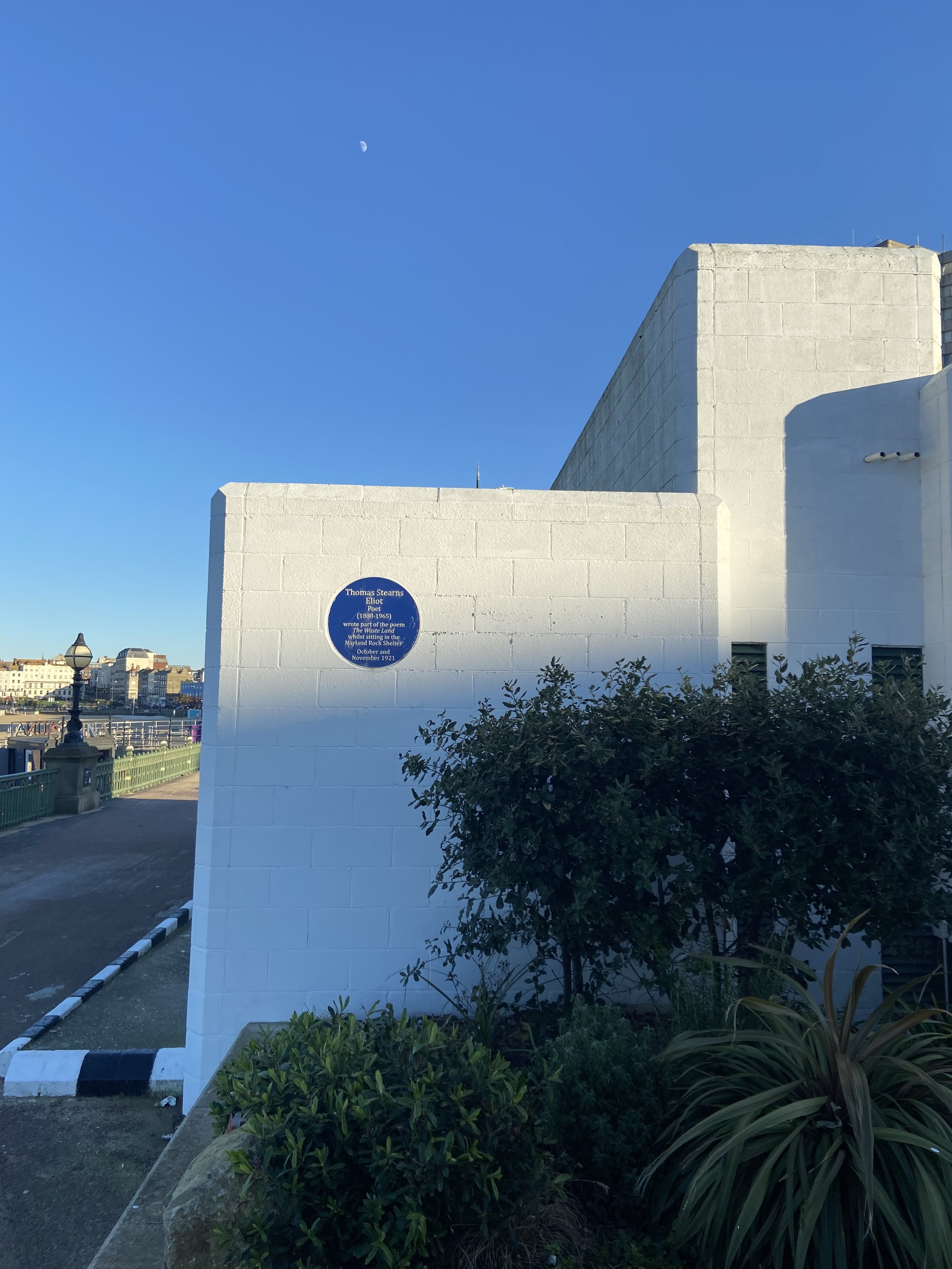
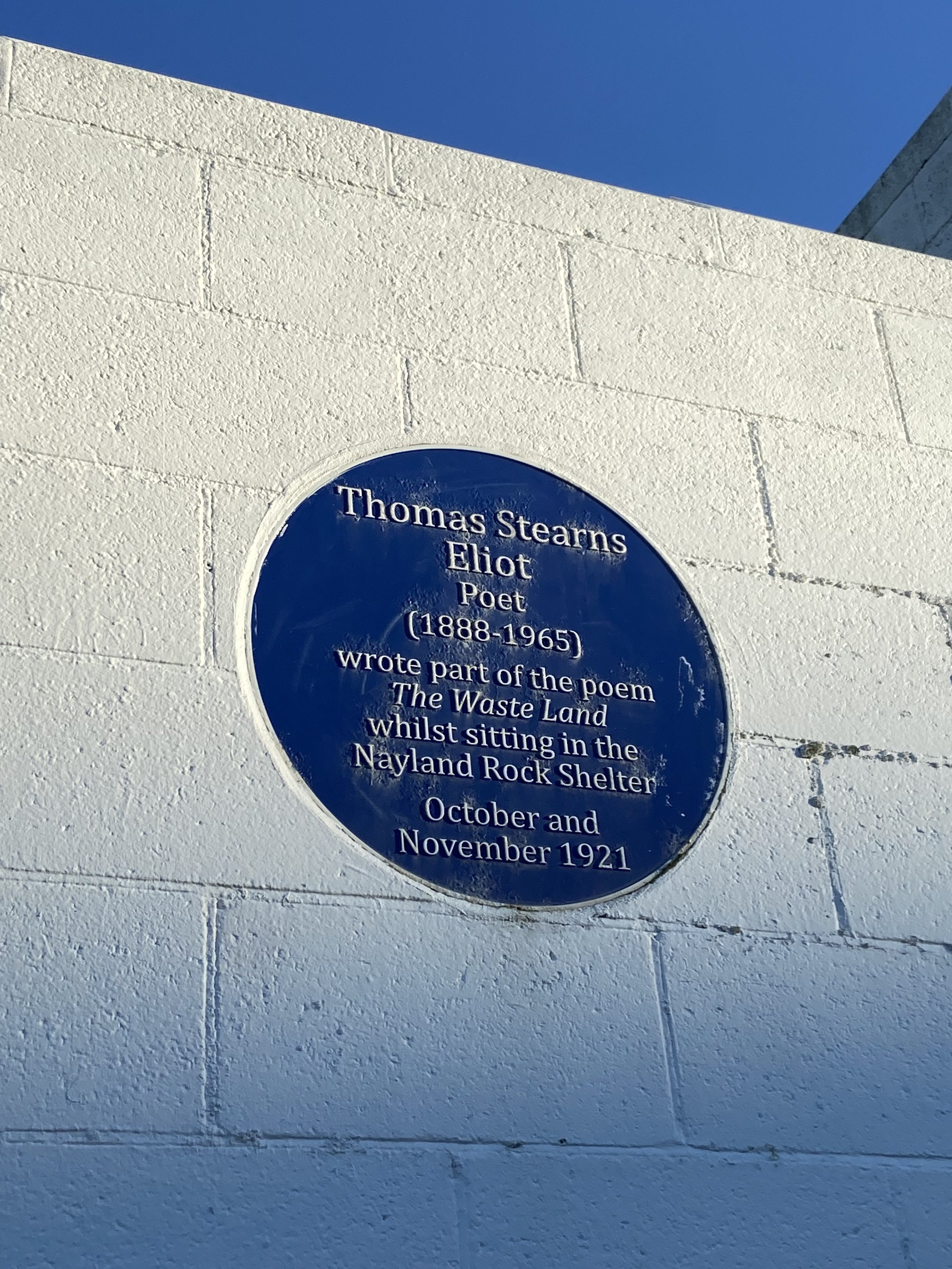
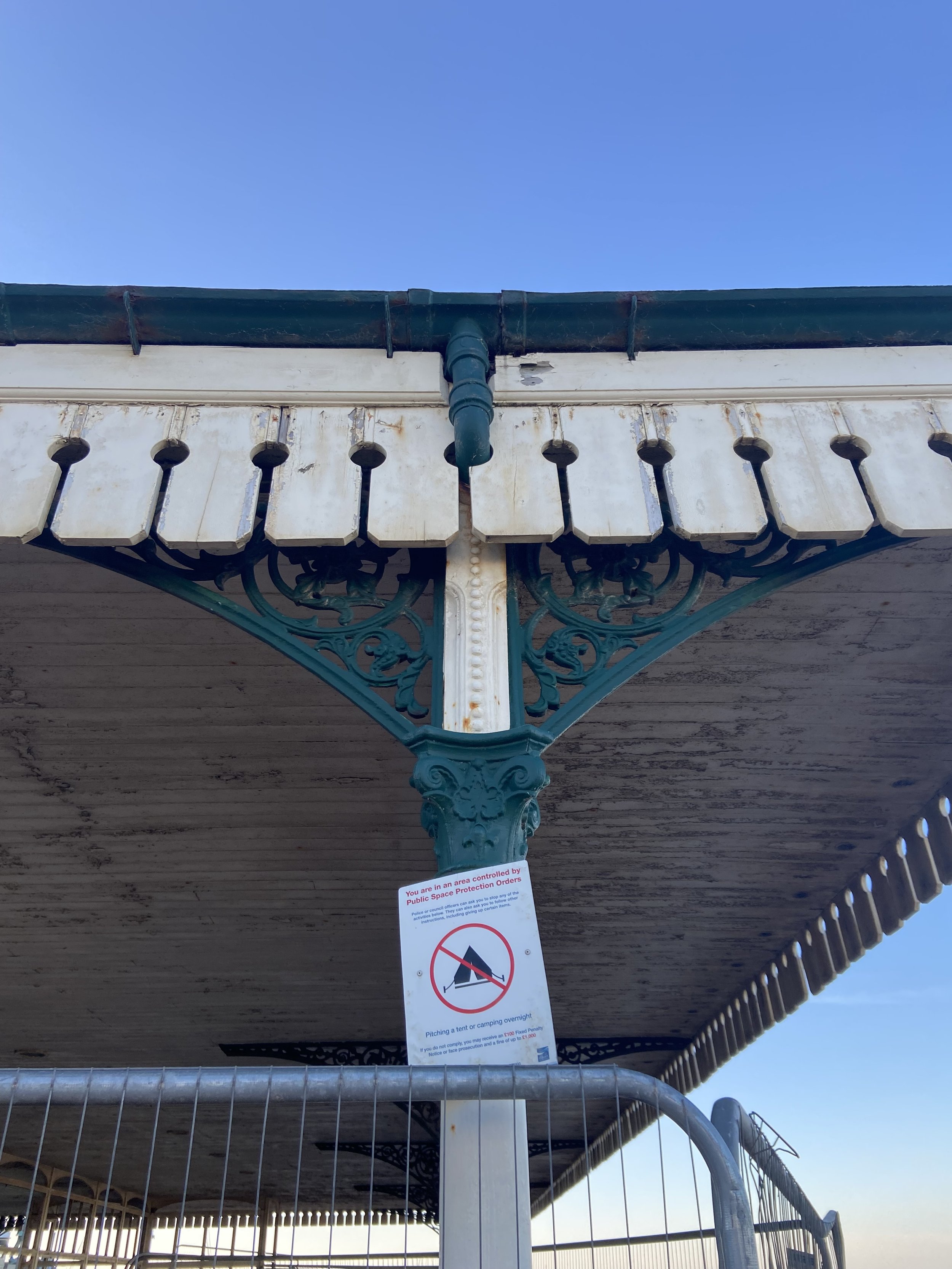
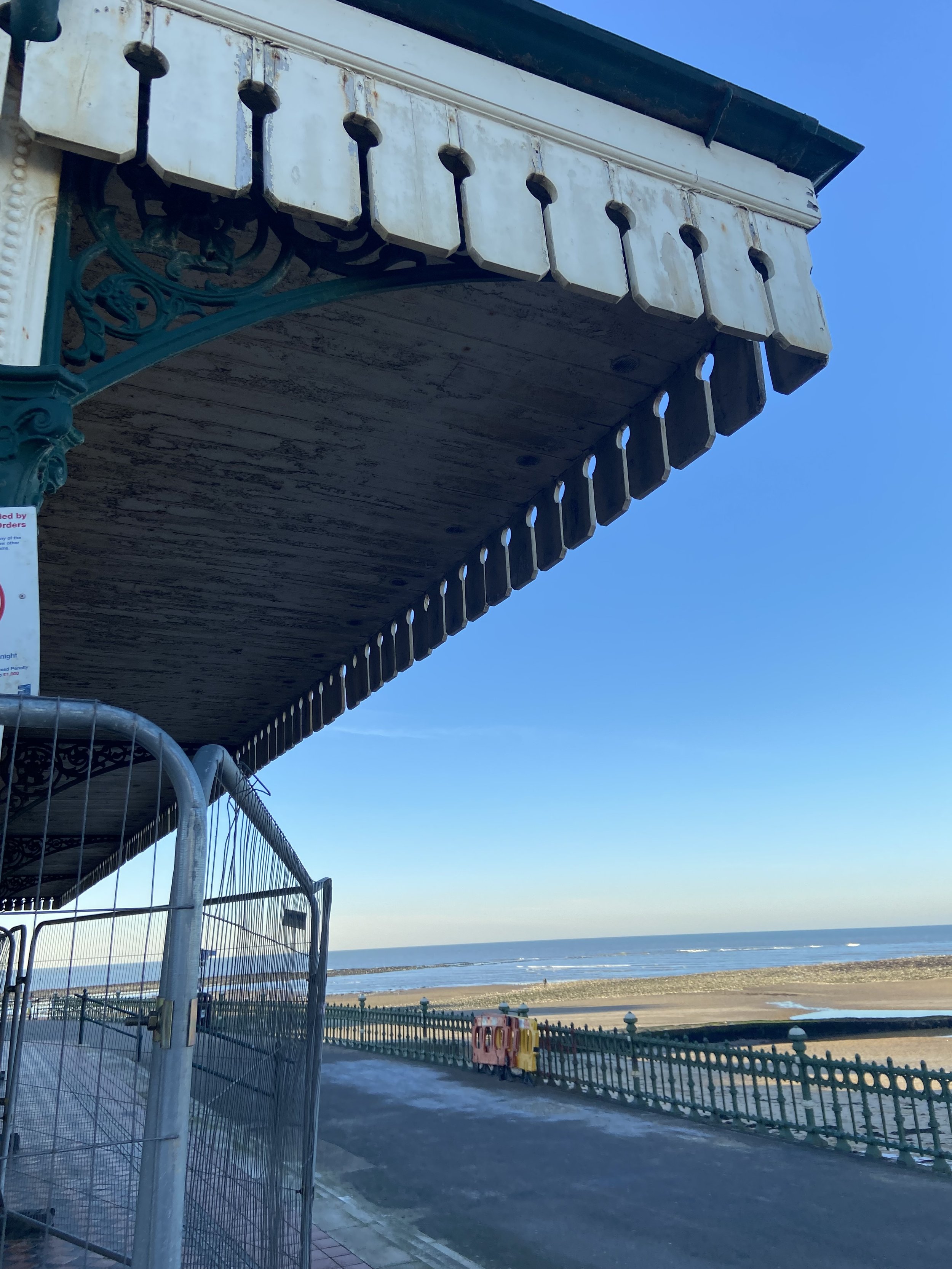
The connection with Eliot, though expressed mostly through associations with local toilets is clear when you do some delving. He stayed in Cliftonville, an area of Margate away from the main old town up on the cliff, where I currently live. He stayed at the Albemarle Hotel, which no longer exists, however I can see the building that replaced it from my window right now. In the 1920s this area was a real tourist destination. The building I live it was previously a seafront hotel. Opposite us on Queens Parade sat a huge hotel complex with views from the cliff out to the North sea. Butlins had a hotel here until the 1970s. With a direct path down to the beach and great transport connections, this was a perfect tourist destination.
The Albemarle Hotel, from margatelocalhistory.co.uk
It’s reported that Eliot came here to recuperate after a breakdown. Although he was American by birth, there is truly nothing more British than coming to the seaside to recover and recharge after a rocky time. Our frequent holidays here and to the gorgeous Hastings on the south coast helped me and my husband through the pandemic years, when we were permitted to travel, and through what can only be described as a clusterfuck of horrible on-going events which started in earnest in 2022. In the psyche of the British is this long-learned truth that coming to the seaside is healing. Georgians and Victorians came here to bathe in the waters to heal themselves from illnesses as varied as epilepsy and depression which were poorly understood by the science of the time. Women were often invited to swim in freezing cold water to cure them of hysteria or sapphic yearnings. We now know a lot more about these conditions, and thankfully that some of them are not diseases and don’t require a cure, but I’m sure swimming helped the people who were trying to deal with them.
In the interwar years Margate continued to be a popular destination for Londoners to escape the smog that descended on the city and Londoner’s lungs. The train or the paddle ship from London made the trip affordable and within reach of most people. No smog here, it’s simply too blustery for anything to hang in the air around too long.
I think about Eliot a lot, meandering down from his Hotel along the cliff paths into town and the front, the same paths I walk now. Thinking through lines of poetry which would go on to be read all over the world.
There is, of course, something very beautiful about the sea, but as well it can be overwhelming to witness. To sit and watch the sea, as Eliot did at that shelter and to look out over this strange constantly moving place which is not a place, something that looks like a unified surface, but is in fact something else, an unknowable landscape that is actually a seascape, a wasteland perhaps? Sorry, I couldn’t help it. As a way of resting and recuperating I am glad Eliot came here, I am even more glad that we came here. The seaside is healing. The changing tides, the constant sense of movement, that everything is in flux, helps you to move on from the things that have been bothering you. Quite simply there’s so much change it makes it easier to live in the present moment. The tides shape and reshape the beach each day, bringing new driftwood, new shells and new dead crabs to look at on walks. I found a pink child’s croc shoe and a leather glove that had washed up on the beach a few days ago. That was a first. The next day I found that the same glove had washed up about 200 metres further down the shore, having spent the night floating about on the tide.
Whether it is the waves themselves or the winds blowing in from the North sea or the ships passing by on their way to the Thames Estuary, you get a sense of change, impermanence, and flow that you cannot fight, you have to just accept it, to forgive it.
I have a deep sense of empathy for Eliot sitting here and looking out over the sea and the main sands and writing I can connect / nothing with nothing. As a town slogan it could do with a redraft. It is honestly quite a bleak sentiment to gift to the town.
How do we connect something with something? In the face of the power of the natural world, our human struggles, political struggles and our mental struggles are put into perspective. It’s overwhelming to make sense of the world we live in. Connection, it seems was a concern of writers in the interwar years, E.M. Forster famously wrote in Howards End, Only Connect… a plea for the head and heart to communicate as well as for all of us to strive to connect on some level with each other.
I’ve found the key to this is embracing our connection with the natural world and most of all with the sea. If there’s one thing I have learned from first hand experience, if you're alone swimming in the sea in October, you’re focusing on your breath, you’re feeling the chill of the waves on your chest and you’re looking out to the ships on the horizon and it is stunningly beautiful. You’re not worrying about your credit card bill.
Eliot came here to recuperate, he wrote some of the greatest poetry of his century here and now my lovely little town perched on the top edge of Kent commemorates him with not one, but TWO toilets. It makes me proud and it makes me feel at home here.
In the end the connection with Eliot wasn’t the key to the regeneration the council had wished for back in 2009. Alongside the toilets, The Wasteland is commemorated as the name of the basement bar in a hotel called The Albion Rooms owned by The Libertines where they record music and often play gigs at local venues. The hotel itself is a few doors down from Eliot’s former hotel the Albermarle.
In the end it was Turner and local heroine Tracey Emin who continue to help turn the tide. Turner was a local visitor a century or so before and lived here off and on with a local Landlady called Mrs Booth. He painted Margate and our beautiful skies, sunsets and sea. Margate continues to grow and attract artists with a huge number of independent galleries. There is also a literary scene here, which is celebrated by the annual book festival in October, as well as by the lovely bookshop in the old town.
I hope you come to Margate, come for the wild weather, the wild locals and to have an existential crisis whilst staring out to sea. Then get some candy floss, go on the merry go round, spend a fortune in the arcades and try to find a Turner painting at the Turner Contemporary. It is the most British of traditions.


